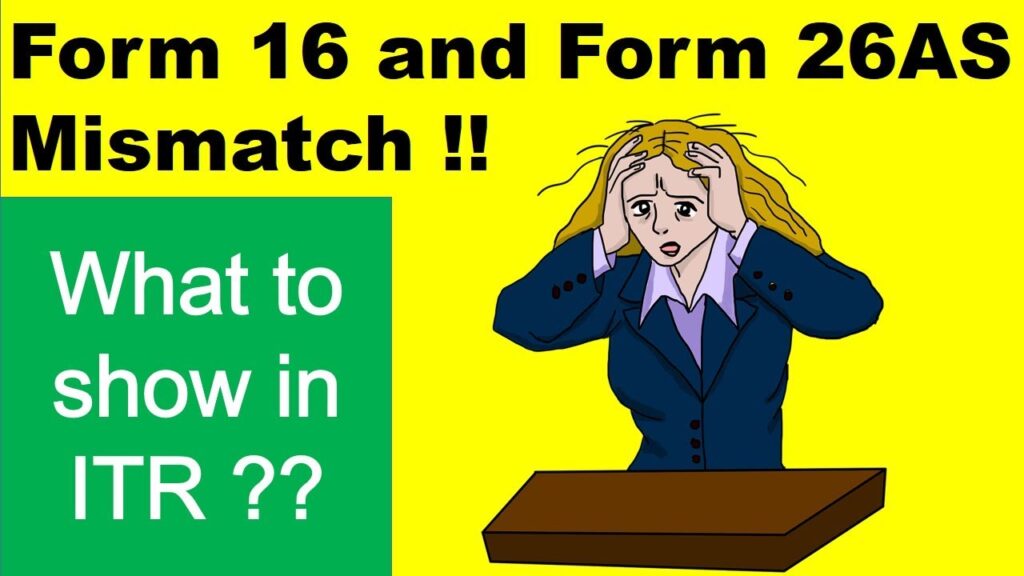Is Addition made by Assessing officer on basis of mismatch between AIR and F26AS Justified

Mismatch F26 and AIR- Is addition by AO justified
The answer is nuanced and depends on several factors. While a mere mismatch between Annual Information Return (AIR) and Form 26AS doesn’t automatically warrant an addition to income, the Assessing Officer (AO) can initiate scrutiny to investigate the discrepancy.
According to the Income Tax Act of India, an assessing officer (AO) cannot make an addition to the income of an assessee solely on the basis of mismatch between the Annual Information Return (AIR) and Form 26AS, without examining the genuineness of the discrepancy and giving the assessee an opportunity to explain the same. This is based on the principles of natural justice and fair assessment, which are enshrined in the Income Tax Act of India and the Constitution of India.
AIR and Form26AS are not conclusive proof of Income
The AO has to verify the facts and circumstances of the case and the evidence provided by the assessee before making any addition. The AIR and Form 26AS are only tools for gathering information and not conclusive proof of income.
Income Tax Provisions lay down rights and duties of Assessing Officer as well as Obligations of Assessee.
The provisions of the Income Tax Act that govern the assessment procedure are sections 142, 143, 144, 147, 148, 153 and 153A. These sections lay down the powers and duties of the AO, the rights and obligations of the assessee, the time limits and the modes of assessment. The AO has to follow these provisions and the rules made thereunder, while making any addition or disallowance to the income of the assessee.
The rationale behind these provisions is to ensure that the assessment is done in a fair, transparent and reasonable manner, and that the assessee is given a proper opportunity to present his case and rebut any adverse findings by the AO.
The AO has to base his decision on the facts and evidence available on record, and not on mere suspicion or presumption.
The AO also has to give a clear and cogent reason for making any addition or disallowance, and not merely rely on the information available in Form 26AS or AIR.
In our view, the additions, made solely on the basis of AIR information especially in the absence of full details of parties and when the receipts declared by the assessee far exceeds the amount mentioned in the AIR information, is not sustainable in the eyes of law. – decision of the Bangalore Bench of the Tribunal in the case of “DCIT Vs. Shree G. Selva Kumar” in ITA. No868/Bang/2009
One may also note the decision in the case of “Mrs Arati Raman Vs DCIT” in ITANo.245/Bang/2012 decided on 05.10.2012] In these cases, the Tribunal has held that the assessment order based only on the strength of the AIR information would not be sustainable in case, the assessee disputes the receipt of income from a particular source.
In such an event the AO need to prove that the assessee has received income because the assessee cannot be expected to prove the negative.
Discrepancies raise suspicion:
Mismatches between reported income and third-party information like TDS certificates (reflected in Form 26AS) can flag potential tax evasion. The AO’s responsibility is to ensure correct tax assessment.
Form 26AS acts as a secondary verification tool: While not perfect, Form 26AS provides the taxpayer’s income details from various sources, making it a valuable tool for cross-checking reported income.
Assesiing Officer is No direct authority for automatic addition:
The Income Tax Act doesn’t explicitly empower the AO to make additions solely based on AIR-Form 26AS mismatch.
AO Needs to follow due process and explanation:
The AO must follow due process and issue a notice under Section 143(2) or 147, allowing the taxpayer to explain the discrepancy.
Notwithstanding above, there are case laws that bonafide explanation from tax payer is also expected, AO has power to initiate scrutiny in such events of mismatch of data
Burden of proof:
The onus lies on the taxpayer to provide a reasonable explanation for the mismatch.
Following case laws support this:
Several ITAT (Income Tax Appellate Tribunal) judgments have upheld the AO’s power to initiate scrutiny based on AIR-Form 26AS mismatch, but not directly make additions.
ITO v. M/s Star Consortium: The ITAT dismissed an appeal by the revenue department stating that mere mismatch isn’t enough for addition.
ITO v. Smt. Sushila Devi: The Tribunal directed re-assessment if the AO, after issuing a notice and considering the taxpayer’s explanation, finds inconsistencies.
ITO v. Shri Rajesh Kumar Agarwal: The ITAT highlighted the AO’s right to scrutinize but emphasized the need for a bonafide explanation from the taxpayer before making any additions.
Concluding- whether such an addition due to mismatch of AIR and Form 26AS is bonafide?
An AIR-Form 26AS mismatch doesn’t guarantee an automatic addition to income. The AO can use the discrepancy as a basis for scrutiny and issue a notice for explanation.
The taxpayer must provide a valid explanation for the mismatch, failing which the AO might make additions based on available evidence and under relevant provisions.
If you encounter an AIR-Form 26AS mismatch, consult a chartered accountant or tax advisor to understand the specific details and prepare a proper explanation for the AO.
Maintain accurate records and supporting documents to substantiate your income claims.
Respond promptly to any notices from the AO and cooperate with the scrutiny process.


 ITAT Amritsar: No Section 269SS Violation for One-Time Cash Payment Before Sub-Registrar
ITAT Amritsar: No Section 269SS Violation for One-Time Cash Payment Before Sub-Registrar  Tax Officials Unleash Digital Dragnet: How New Raid Powers Redefine Privacy, Property Rights in India and likely to Fuel Corruption
Tax Officials Unleash Digital Dragnet: How New Raid Powers Redefine Privacy, Property Rights in India and likely to Fuel Corruption  Income Tax Department Rewards for Reporting Tax Evasion: A Comprehensive Guide
Income Tax Department Rewards for Reporting Tax Evasion: A Comprehensive Guide  Forfeiture of Gratuity by Employer- What are the Remedies for an employee- Can employer be challenged?
Forfeiture of Gratuity by Employer- What are the Remedies for an employee- Can employer be challenged?  Employer can forfeit gratuity of an employee in case of moral turpitude
Employer can forfeit gratuity of an employee in case of moral turpitude  Diving Deeper: The Impact of the New Tax Bill on Dairy and Farming Income
Diving Deeper: The Impact of the New Tax Bill on Dairy and Farming Income